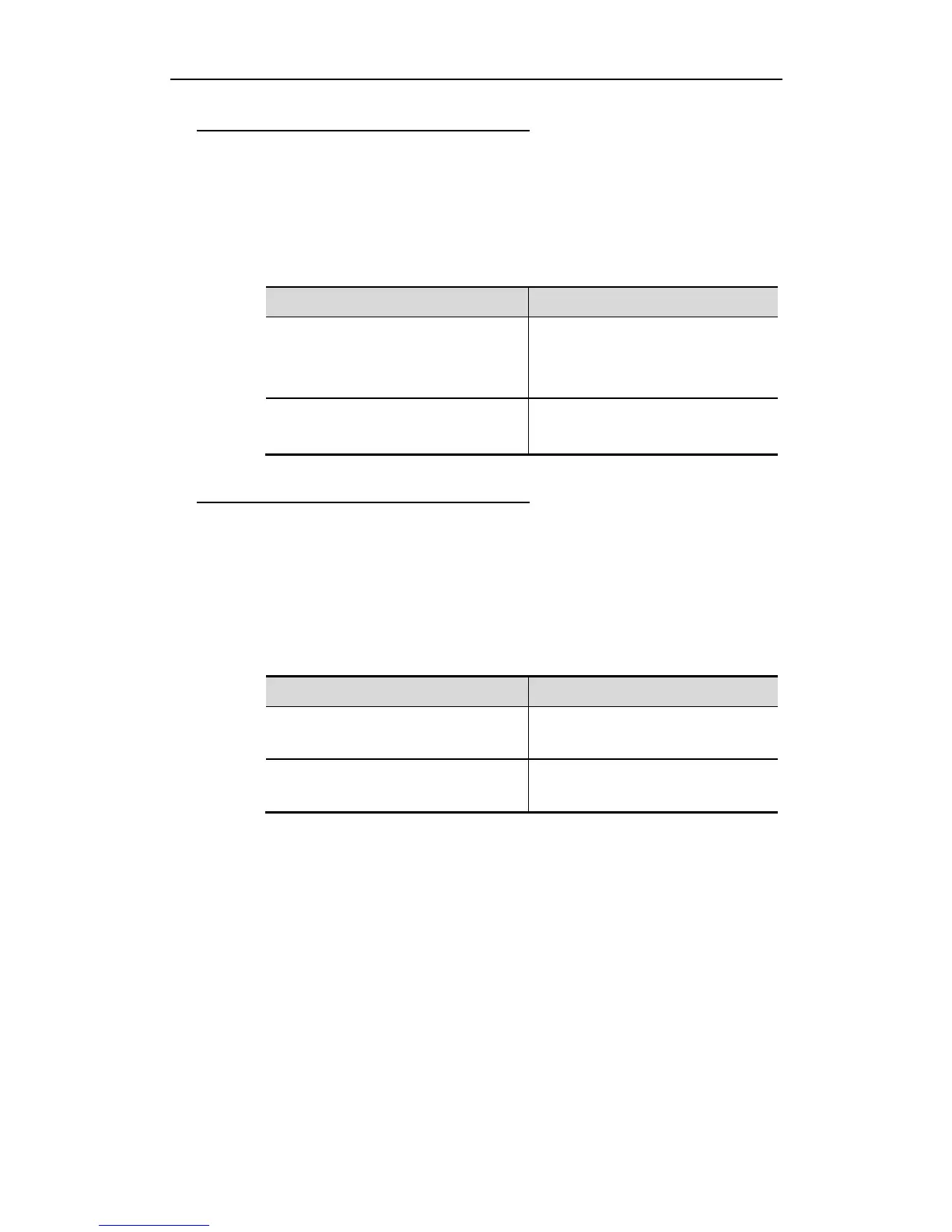Configuration Guide Basic Switch Management Configuration
Configuring Local Users
Our products support local database-based identify authentication system used
for local authentication of the method list in AAA mode and local authentication
of line login management in non-AAA mode.
To enable the username identity authentication, run the following specific
commands in the global configuration mode:
Ruijie(config)# username name
[password password | password
encryption-type encrypted password]
Enable the username identity
authentication with encrypted password.
Ruijie(config)# username name
[privilege level]
Set the privilege level for the user
(optional).
Configuring File Operation Permissions
Our products support granting permissions to the specified files to the local
users. Permissions include read (r), write (w) and execute (x) permissions. To
be compatible with previous user operations, users have all permissions to files
when no permissions are configured.
To configure file operation permissions of the local user, run the following
commands in global configuration mode.
Ruijie(config)#username name
permission oper-mode filename
Configure permissions to the specified
files.
Ruijie(config)#no username name
permission oper-mode filename
Delete permissions to the specified files.
The oper-mode parameter indicates operating permissions. Valid permissions
include: n: no permissions; r: read permission; w: write permission; x: execute
permission. You can combine r, w and x randomly. For example, rw means write
and read permissions; rx means read and execute permissions; wx means write
and execute permissions.
The filename parameter indicates file name or directory name, which is
represented by the method of Linux/Unix. For example, /config.text means the
config.text file under the root directory.
You can use the username name permission command to permit users to
operate a specified file or files under a specified directory. For example, use the
following command to permit users to read and write all files under the root
directory:

